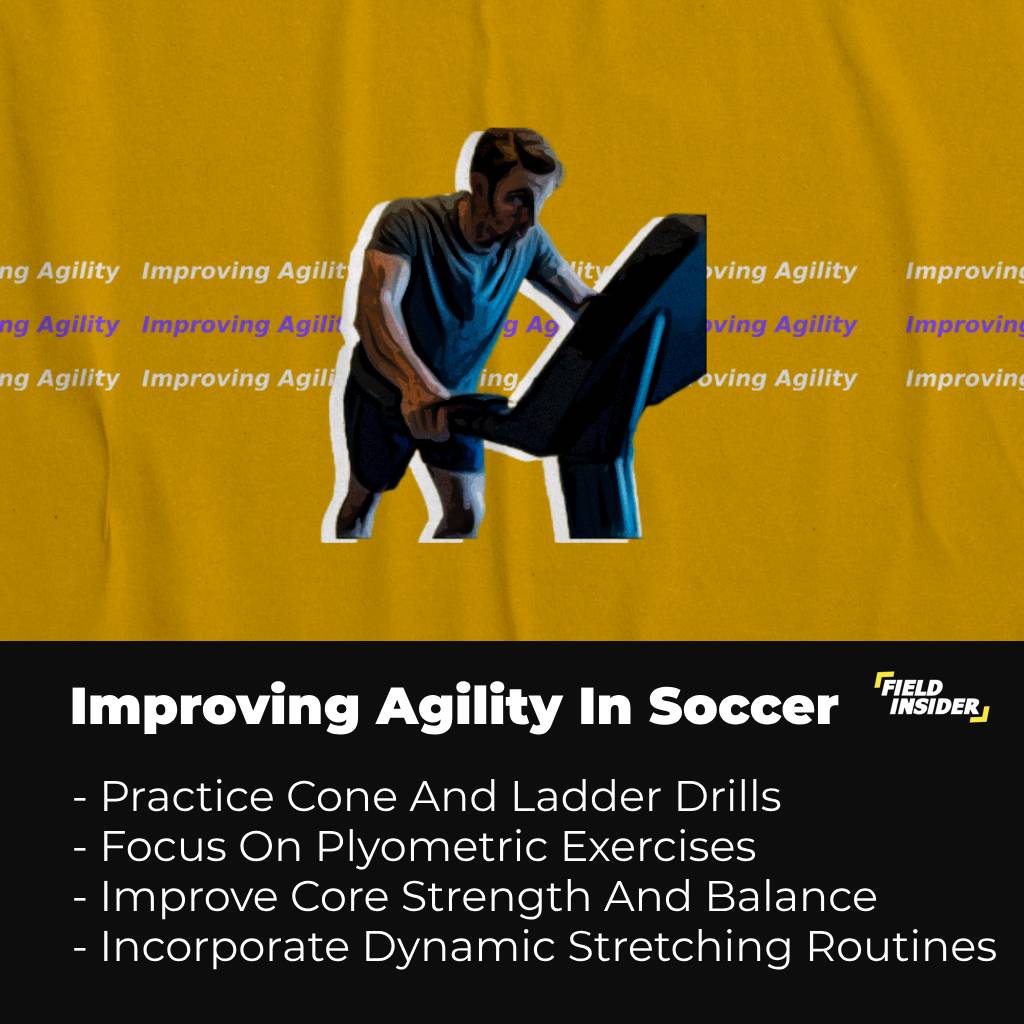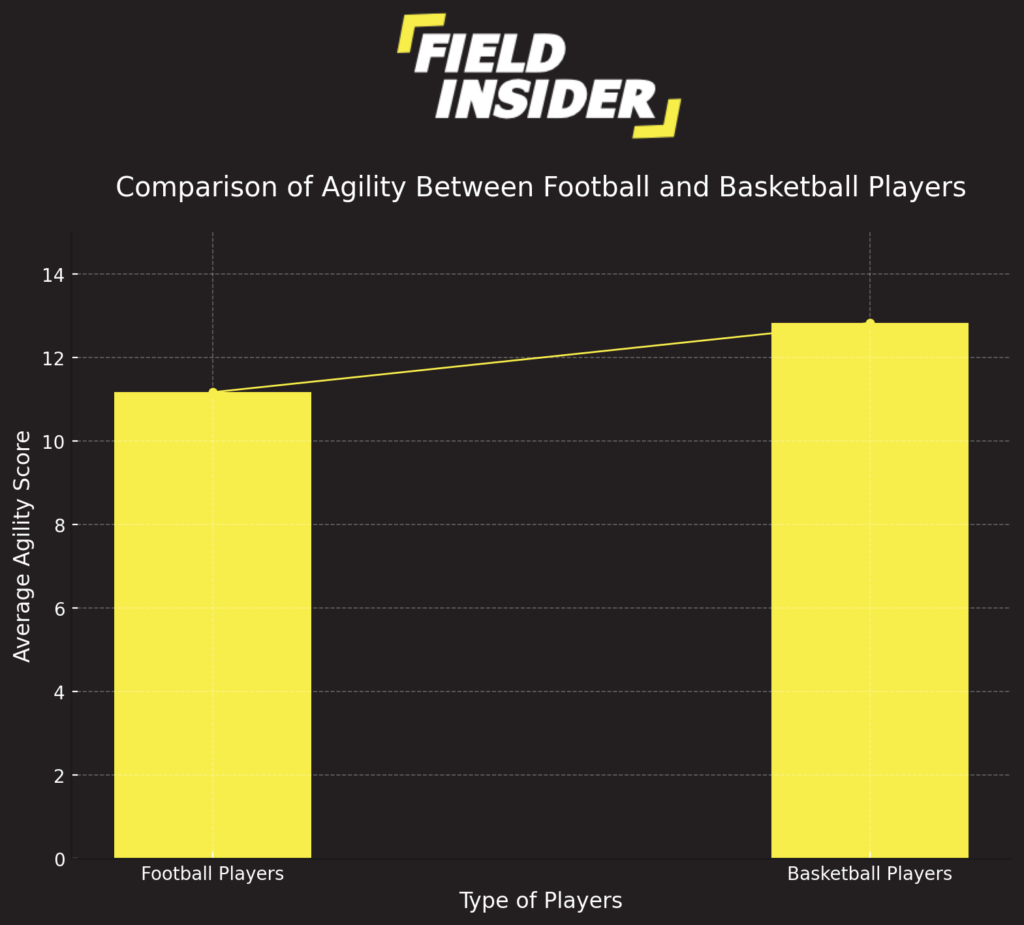Why Is Agility Important In Football? Full Guide
Football, often described as a game of skill and strategy, extends beyond mere physical strength and endurance. Among the myriad of attributes essential for peak performance, football agility stands out as a pivotal skill set, separating the good players from the greats.
In this comprehensive guide, we delve into the world of agility in football. We will explore its definition within the sport, its impact on a player’s success, training techniques to enhance agility, and its evolving significance in modern football trends.
Key Takeaways
| Key Aspect | Details |
|---|---|
| Agility Definition in Football | A blend of speed, change of direction, and balance. |
| Impact on Performance | Critical for evading defenders, creating scoring opportunities, executing defensive maneuvers. |
| Training for Agility | Involves cone drills, ladder drills, reaction drills, emphasizing flexibility and mobility. |
| Agility in Match Situations | A game-changer in various play scenarios. |
| Injury Prevention | Agility training reduces injury risks and promotes muscle balance. |
| Modern Football Trends | Agility’s evolving role, enhanced by technology and data analysis, influences tactics and playing styles. |
Understanding Agility in Football
Definition in the Football Context
Agility in football transcends the typical notion of quickness. It’s an intricate blend of speed, change of direction, and balance. This multifaceted skill allows players to operate efficiently on the pitch, crucial for both attacking and defensive play.
Agility elevates a player’s game, distinguishing them in a sport where every second and every move counts.
Key Components of Agility
Speed
In football, speed as a component of agility refers to more than just running fast. It’s about quick acceleration and the ability to reach top speed rapidly.
This element is crucial for breaking away from defenders, as seen in players vying for the 2023 Golden Boot, where agility and speed combine to create prolific scorers.
Change of Direction
Change of direction, a vital aspect of agility, enables players to navigate through tight spaces and evade opponents with ease.
It’s not just about moving fast but also about the ability to quickly alter movement patterns, essential in dynamic gameplay, as exemplified in the 4-4-2 Formation, which often requires players to rapidly shift positions and strategies.
Balance
Balance is the cornerstone of effective agility. It allows players to maintain control of their bodies during rapid changes in movement, ensuring that they can execute skillful plays under pressure.
Good balance is critical for performing at peak levels in challenging situations, be it in attack or defense.
Differentiation from Other Physical Attributes
Agility in football is distinctly different from other physical attributes like raw strength or endurance.
It’s a complex synergy of physical and mental skills, enabling players to respond swiftly and effectively to in-game situations. This unique blend of attributes sets agility apart as a crucial factor for success in football.
Impact of Agility on Performance

Contribution to Player’s Success
Agility profoundly influences a football player’s success on the field. It enables swift, agile movements, critical for evading opponents and creating advantageous positions.
This skill is not merely an add-on but a fundamental aspect that can dictate the flow of the game, turning potential challenges into opportunities for remarkable plays.
Examples of Agile Football Players
Agile football players often stand out for their exceptional performance. Their ability to maneuver quickly, change direction seamlessly, and maintain balance under pressure sets them apart, making them invaluable assets to their teams.

Lionel Messi
Widely celebrated as one of the greatest, Lionel Messi’s agility is almost unparalleled. His rapid direction changes, coupled with his quick bursts of speed and exceptional balance, make him an extraordinary player, consistently outmaneuvering defenders with ease.
Neymar Jr.
Neymar Jr., known for his flair on the field, exhibits remarkable agility. His skill in maneuvering through tight spaces and creating scoring opportunities from challenging positions is a testament to his agility.
Eden Hazard
Eden Hazard is another prime example of agility in football. His low center of gravity and quick changes of pace allowed him to weave through defenses, making him highly effective in breaking down opposition defenses.
Kylian Mbappé
Kylian Mbappé’s agility, combined with his explosive speed, sets him apart as a formidable forward. His rapid acceleration and sharp directional changes make him a constant threat to defenders.
Cristiano Ronaldo
Cristiano Ronaldo, renowned for his physical prowess, also possesses significant agility. His ability to make quick turns and sudden movements, particularly in his earlier career, contributed immensely to his effectiveness on the field.
Raheem Sterling
Raheem Sterling’s game is heavily influenced by his agility. His capability to change direction quickly and maintain speed is a vital element of his attacking strategy, helping him outpace and outmaneuver defenders.
Role in Various Positions
Agility is crucial across all positions on the football field. For strikers, it’s about outmaneuvering defenders to create scoring chances. Midfielders rely on agility to navigate through tight spaces and maintain control of the ball.
Defenders use agility to adjust their positioning quickly and effectively counter the attacking threats. This universal importance of agility in football is further explored in other articles, providing insights into how agility plays a role in various tactical setups.
Training and Developing Agility

Importance in Training
Incorporating agility training in football is pivotal for enhancing a player’s overall performance and adaptability. This form of training goes beyond traditional fitness routines, focusing on quick directional changes, speed, and balance.
It’s integral for players to develop these skills to cope with the fast-paced nature of modern football, as agility directly impacts their effectiveness in games.
Drills and Exercises
Cone Drills
Cone drills are a fundamental part of agility training, designed to enhance a player’s ability to quickly navigate tight spaces. These drills involve weaving in and out of a series of cones, simulating the movements required to evade opponents on the field.
They are essential for developing quick feet and agile movement, as explored in our guide on “Best Fun Drills for Youth Soccer Team Training”.
Ladder Drills
Ladder drills focus on improving a player’s footwork and coordination, crucial components of agility. These exercises require players to step in and out of a ladder laid on the ground, promoting rapid foot movement and coordination.
This type of training is instrumental in developing the quick and precise footwork needed in high-pressure game situations.
Reaction Drills
Reaction drills enhance a player’s ability to quickly respond to changing game situations. These drills involve responding to visual or auditory cues, mirroring the unpredictability of a football match.
They are vital for developing a player’s cognitive agility and decision-making speed, crucial aspects of performance during matches.
Role of Flexibility and Mobility
Flexibility and mobility are key to achieving high levels of agility. These attributes allow players to move their bodies effortlessly, reducing the risk of injuries while performing agile movements.
Training and developing agility is a multifaceted process, crucial in the formation of a well-rounded football player. Through specific drills and exercises focused on speed, coordination, and reaction, players can significantly improve their agility.
Agility in Match Situations
Application During Matches
Agility finds its true test in match situations. It’s in the heat of the game where agility becomes a critical tool for players. Agile players can adapt quickly to the ever-changing dynamics on the field, giving them an edge in both offensive and defensive scenarios.
Their ability to swiftly change direction, speed up, or slow down can be the difference between winning and losing crucial moments.
Analysis of Game Situations
Evading Defenders
In attacking scenarios, agility enables players to evade defenders with ease. Quick turns, sudden stops, and explosive bursts of speed are all agility-based maneuvers that create space and opportunities.
This aspect is crucial for strikers and wingers, as they constantly face the challenge of breaking through defensive lines.
Creating Scoring Opportunities
Agility directly contributes to creating scoring opportunities. Players who can quickly change direction and pace can open up defenses, creating chances for themselves or their teammates.
This ability is particularly valuable in tight spaces near the goal, where quick, agile movements can lead to crucial goal-scoring opportunities.
Defensive Maneuvers
Defensively, agility is equally important. It allows defenders and goalkeepers to react swiftly to threats, adjust their positioning, and successfully tackle or intercept the ball.
Agile defenders can better cope with fast attackers, maintaining a solid defensive structure even under pressure.
agility comparison : Football vs basketball
In a study, published on the International Journal of Health Sciences and Research, that was conducted by Apollo Institute of Physiotherapy, Gujarat University to analyze the agility in football players and basketball players, the following findings were discovered;

The bar graph above illustrates the comparison of average agility scores between football players and basketball players. The findings from the graph can be summarized as follows:
- Football Players: The average agility score for football players is approximately 11.17. This is visualized by the shorter yellow bar on the left.
- Basketball Players: The average agility score for basketball players is higher, at approximately 12.83, as represented by the taller yellow bar on the right.
- Difference in Agility: The graph shows that basketball players, on average, have a higher agility score compared to football players. This is evident from the relative heights of the two bars.
- Statistical Significance: Although not directly represented on the bar graph, the accompanying data provided earlier mentioned a p-value of 0.01 for the difference in agility scores. This indicates that the difference in agility scores is statistically significant and not likely due to random variation.
The bar graph visually conveys that basketball players have a statistically significant higher average agility score compared to football players.
Agility and Injury Prevention

Reduction of Injury Risks
Agility training is not only about enhancing performance but also plays a vital role in reducing the risk of injuries. Agile movements require control, coordination, and balance, which, when developed properly, can protect players from common football injuries like strains and sprains.
By training the body to handle quick changes in direction and pace, players can avoid situations that often lead to injuries.
Relationship with Muscle Balance
Agility training promotes muscle balance, an often overlooked aspect of athletic training. It ensures that both the major and minor muscle groups are engaged and strengthened, reducing the likelihood of overuse injuries.
This balance is crucial for a player’s long-term health and career longevity, as it prevents imbalances that could lead to chronic injuries.
Importance of Recovery and Rest
Recovery and rest are integral components in maintaining agility. They allow the body to heal and rebuild after intense periods of training or matches. This downtime is essential in preventing overuse injuries and in maintaining a high level of agility.
Effective recovery strategies, including proper sleep, nutrition, and active recovery techniques, are essential for preserving a player’s agility and overall health, as discussed in “Prevent Injuries for Your Kids”.
Agility in Modern Football Trends
Evolving Role in Contemporary Football
Agility has become increasingly important in modern football, a sport that continually evolves with faster pace and more complex tactics. Today’s football requires players to possess a high level of agility to adapt to the rapid tactical shifts and diverse playing styles.
This evolution has made agility not just a beneficial attribute but a fundamental requirement for players at all levels of the game.
Enhancement Through Technology and Data Analysis
The use of technology and data analysis in football training has significantly enhanced the development of agility. These tools allow for personalized training programs, detailed performance analysis, and real-time feedback, optimizing the agility training process.
They provide insights into a player’s movements, helping to fine-tune agility-related skills. This technological advancement in training is a testament to the growing importance of agility in football.
Influence on Tactics and Playing Styles
Agility influences various tactics and playing styles, shaping the way football is played today. Agile players thrive in high-press systems, such as “Gegenpressing,” where quick reactions and rapid changes in direction are essential.
Similarly, in possession-based play or counter-attacking strategies, agility enables players to quickly transition between offense and defense, adapting to the demands of modern football tactics like those in the 5-2-3 Formation.
Conclusion
In conclusion, agility in football is a multifaceted skill that transcends traditional physical fitness. It’s a unique blend of speed, balance, and quick directional changes, integral to a player’s success in the modern game.
As the sport continues to evolve, the importance of agility remains paramount. This guide underscores the critical role of agility in football, offering insights and strategies to help players and enthusiasts appreciate and enhance this vital skill in their football journey.








